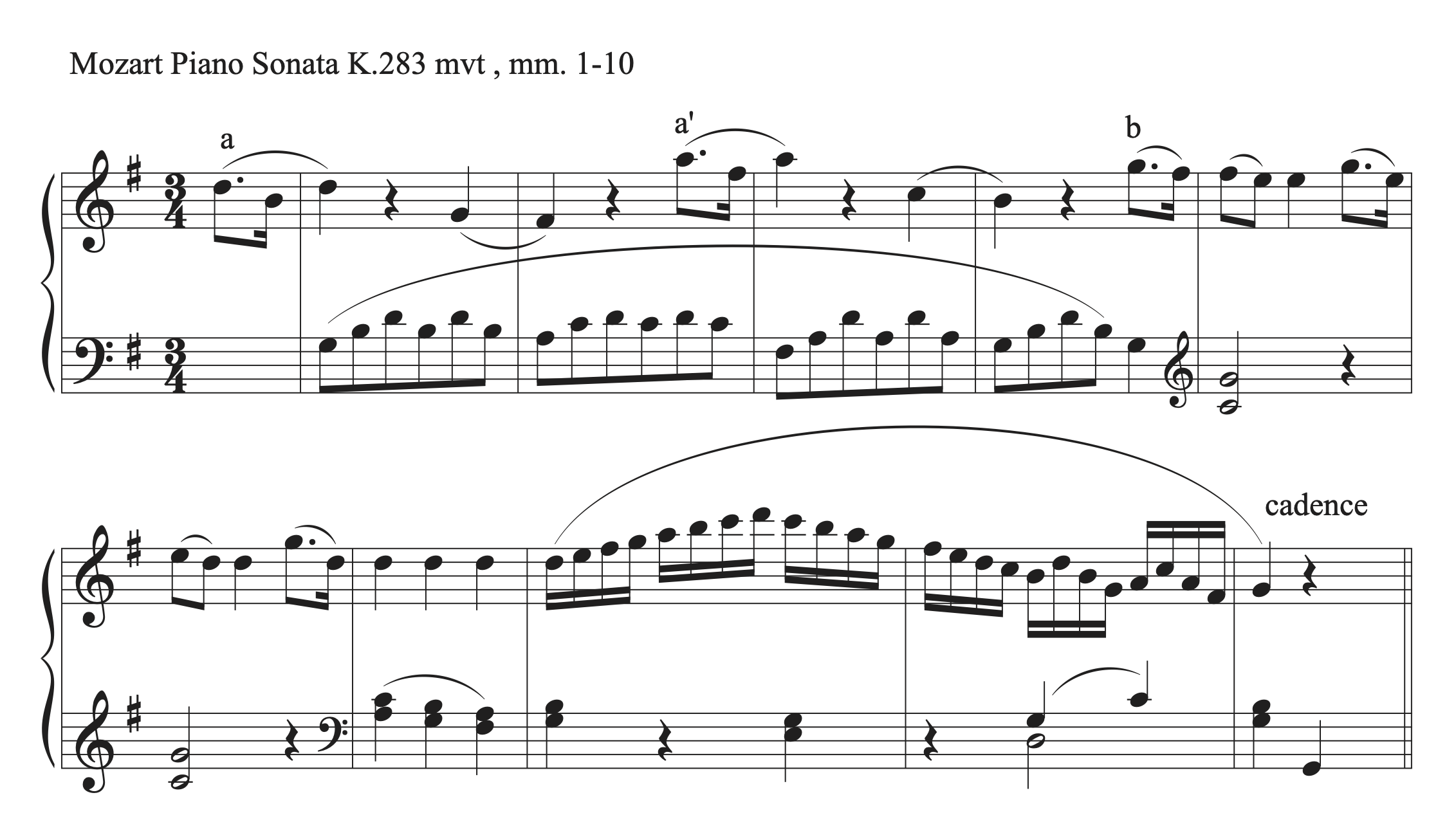8.2 Sentences and Periods: Tutorial
Period
A period consists of a pair of phrases that combine to form a bigger, more coherent whole. The pair of phrases are harmonically dependent on each other. Each phrase has a cadence. The first phrase’s cadence is progressive and needs to move on to the second phrase, while and the second phrase’s cadence is stronger and more conclusive. We call the first phrase the antecedent, and the second phrase the consequent.
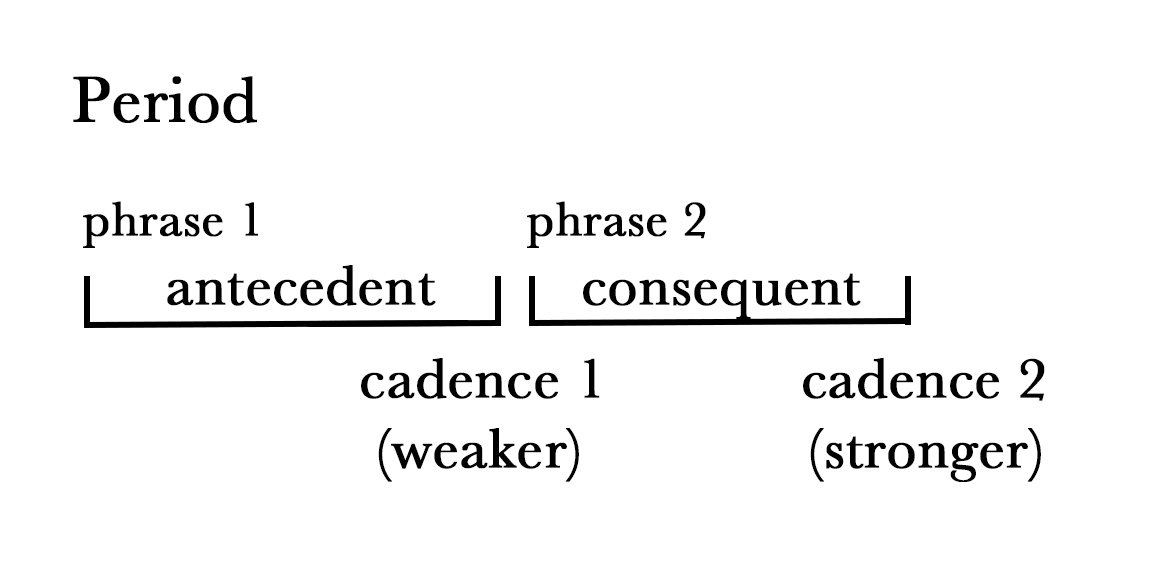
While the interdependent harmonic relationship and cadence structure define a period, periods can also be classified by the relationship of their melodic material.
Parallel Period
A parallel period is a period in which each phrase presents the same or similar melodic material. The two phrases start the same way melodically and harmonically: a a’
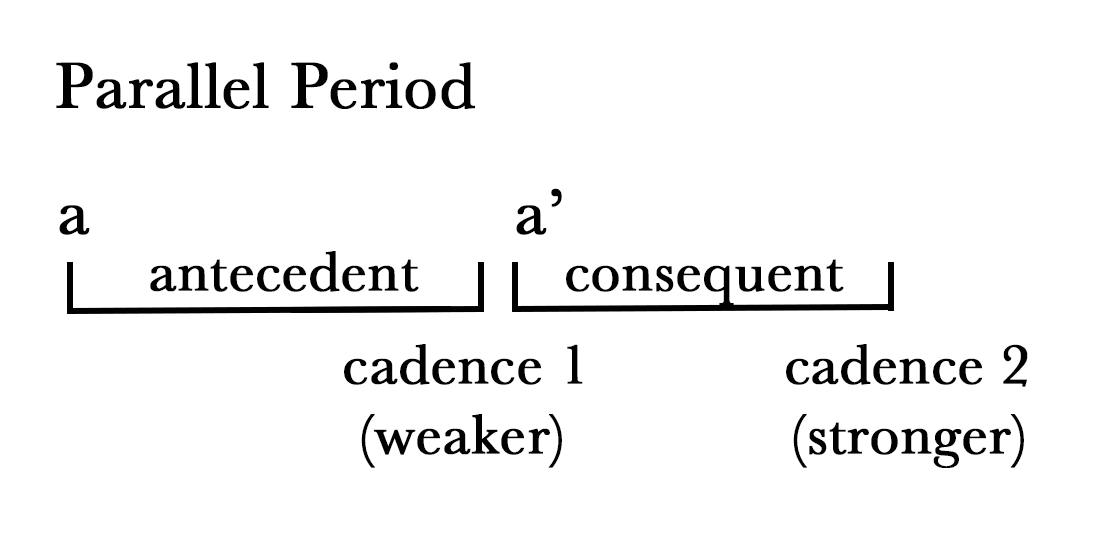

Contrasting Period
A contrasting period is a period with a consequent that starts with different material from the antecedent: a b
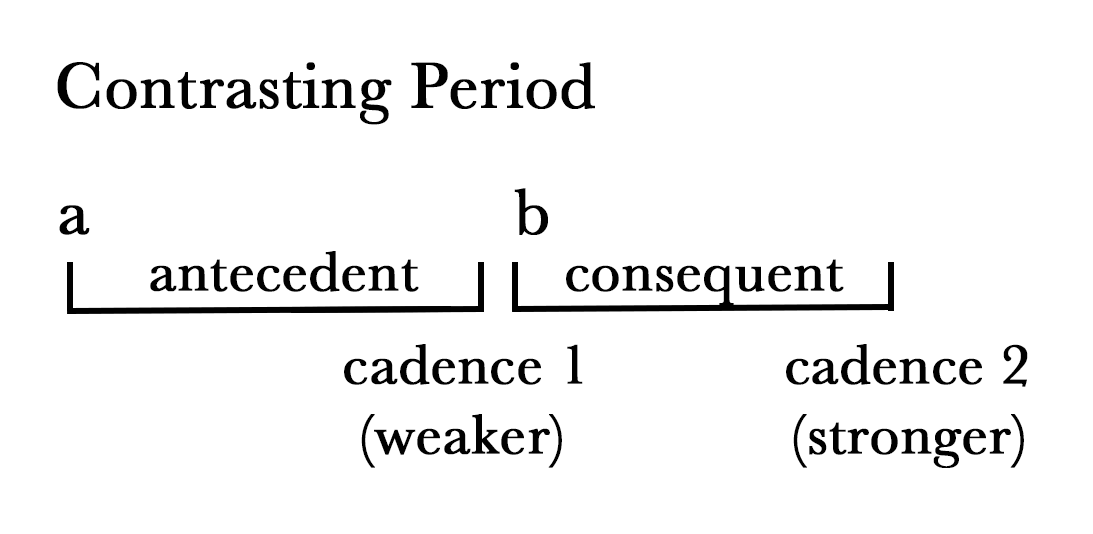

Periods that use Sentence form
Phrases in a period can use sentence form as part of their phrase structure.
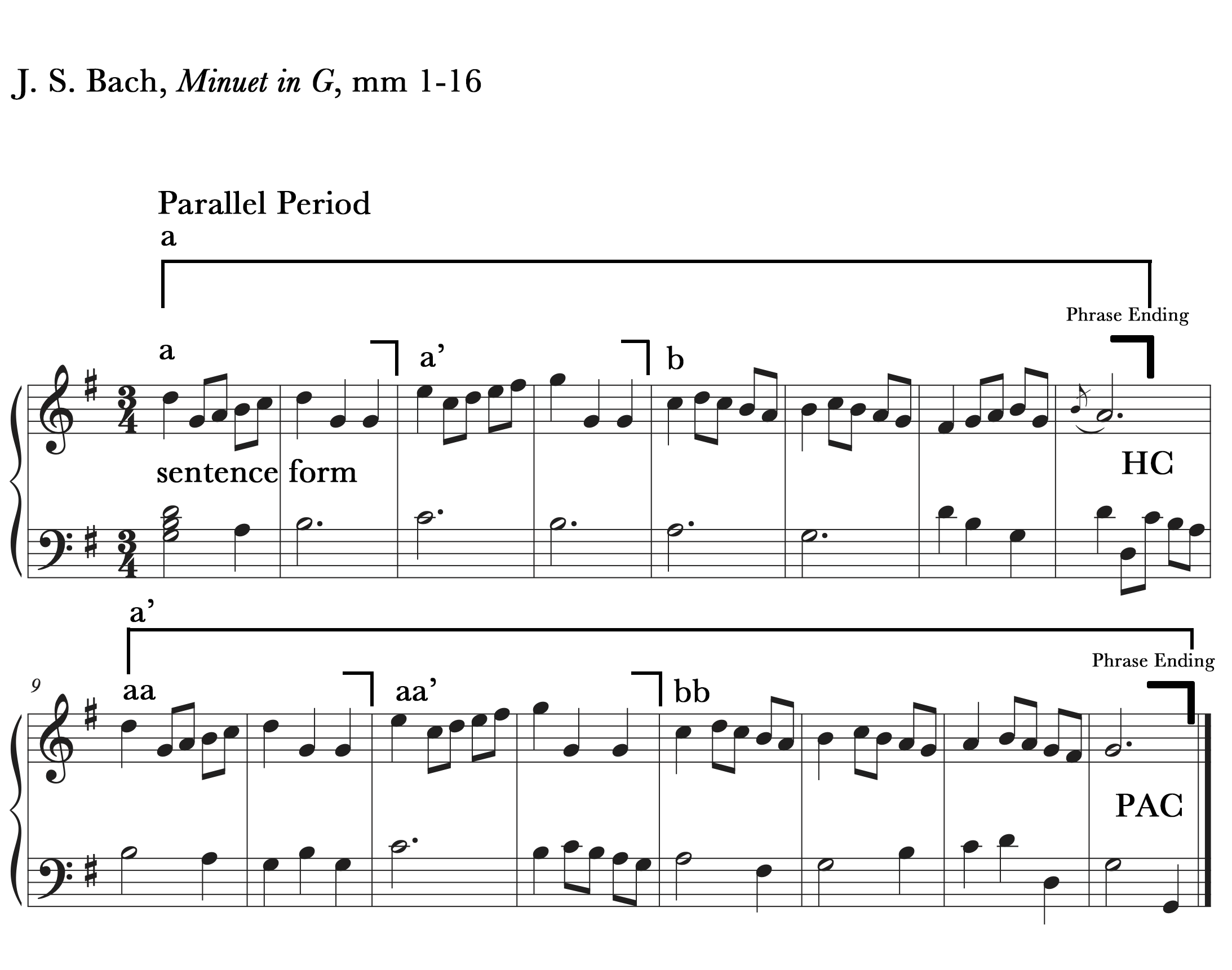
Asymmetrical Phrases and Periods
A phrases or period in which the phrases are not equal in length is called an asymmetrical. Usually, the second or consequent phrase is extended, either in the middle or end. In the example below, instead of cadencing in bar 8, Mozart extends the end of the b section to cadence in bar 10.
